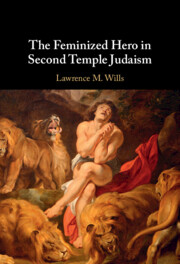This article investigates the early development of gendered Christian symbolism by focusing on discrepancies between two sections of the Shepherd of Hermas. Using close textual analysis and contemporary feminist theological frameworks, I identify the seemingly subtle, yet crucial and conspicuous, transformations of gender symbolism in the revision of Vision 3 into Similitude 9. These transformations include replacing the feminine Church with the Shepherd, the Tower, and the Son of God; dividing seven women (Faith and her genealogical descendants) into twelve virgins and their twelve vicious counterparts; and erasing “waters” and “the deep” from the Church’s foundation, while emphasizing tall rocks and level ground. Scholars typically have considered these revisions to be products of deeper and more systematic theological reflection, or mere elaborations and expansions in a “literary unity” drawn from oral composition. I argue instead that the revisions are rooted in embedded cultural patterns that consistently exclude maternal figures and their associated imagery. This re-evaluation of the revision process in Hermas complements other approaches to studying women in early Christian history, supplying a critical account of the evolving conceptual and symbolic structures that supported declines in the ecclesiastical status and symbolic significance of women.
